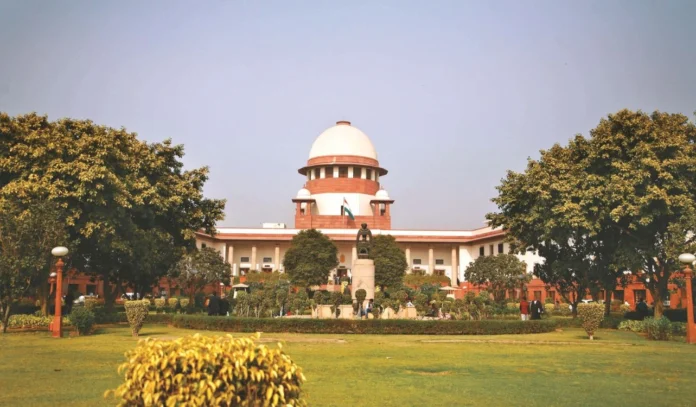The Supreme Court of India has sought a detailed report from the Commission for Air Quality Management in the National Capital Region and Adjoining Areas (CAQM) regarding the functioning of air quality monitoring systems in Delhi, following reports that most of the city’s stations were non-operational during the Diwali period. The direction came after the Court was informed that only a small fraction of the monitoring units were active at a time when pollution levels were at their peak.
A Bench comprising Justice B. R. Gavai and Justice K. Vinod Chandran issued the order while hearing ongoing proceedings concerning Delhi’s persistent air pollution crisis. The Court’s amicus curiae, advocate Aparajita Singh, informed the Bench that only nine out of thirty-seven monitoring stations were functioning during Diwali, leaving a major gap in the collection of air quality data for the period when the city experiences one of its most severe pollution spikes.
The revelation prompted the Court to express concern over the apparent lack of coordination among agencies tasked with tracking air quality. The Bench directed the CAQM to file a status report on the operational condition of all air quality monitoring stations and to explain the circumstances that led to such widespread malfunctioning during a critical time.
The Court’s order comes amid mounting criticism over the reliability of air pollution data in the capital. Multiple reports have suggested that water sprinkling operations were carried out near certain monitoring locations just before air quality readings were taken, potentially skewing the data and presenting an inaccurate picture of actual pollution levels.
The Supreme Court, which has been closely monitoring the issue of air pollution in the Delhi-NCR region for several years, reiterated that accurate data collection is essential for framing effective pollution control measures. The Bench noted that without credible monitoring, the CAQM and other government bodies cannot properly evaluate the success or failure of policies implemented to mitigate pollution.
The Court also took note of recent news coverage showing a sharp deterioration in Delhi’s Air Quality Index (AQI) immediately following Diwali festivities, with the city recording levels that reached the “severe” category across several localities. Despite restrictions on firecrackers, thick smog blanketed the capital for days, reducing visibility and triggering health advisories.
By seeking a report from the CAQM, the Supreme Court has signalled its intent to ensure accountability and transparency in the management of Delhi’s air quality systems. The Court is expected to review the CAQM’s findings in the next hearing, where it may issue further directions to both the Delhi Government and central agencies overseeing air pollution control.
The issue continues to underscore Delhi’s chronic struggle with toxic air, especially during the winter months, when factors such as stubble burning, vehicular emissions, and festive fireworks combine to create hazardous living conditions. The Supreme Court’s latest intervention reflects growing judicial frustration over repeated administrative lapses and the lack of effective enforcement despite years of monitoring and directives.


